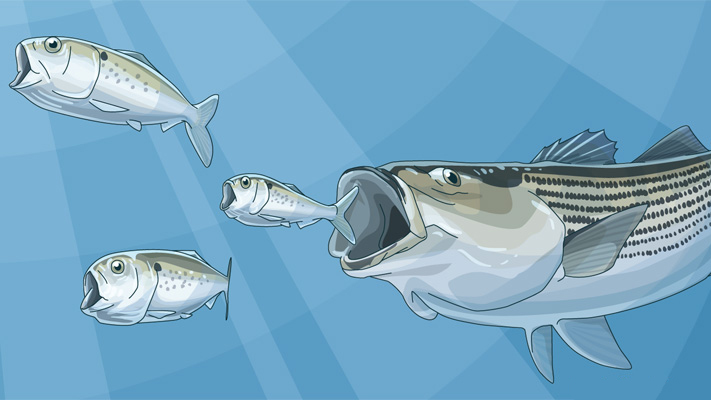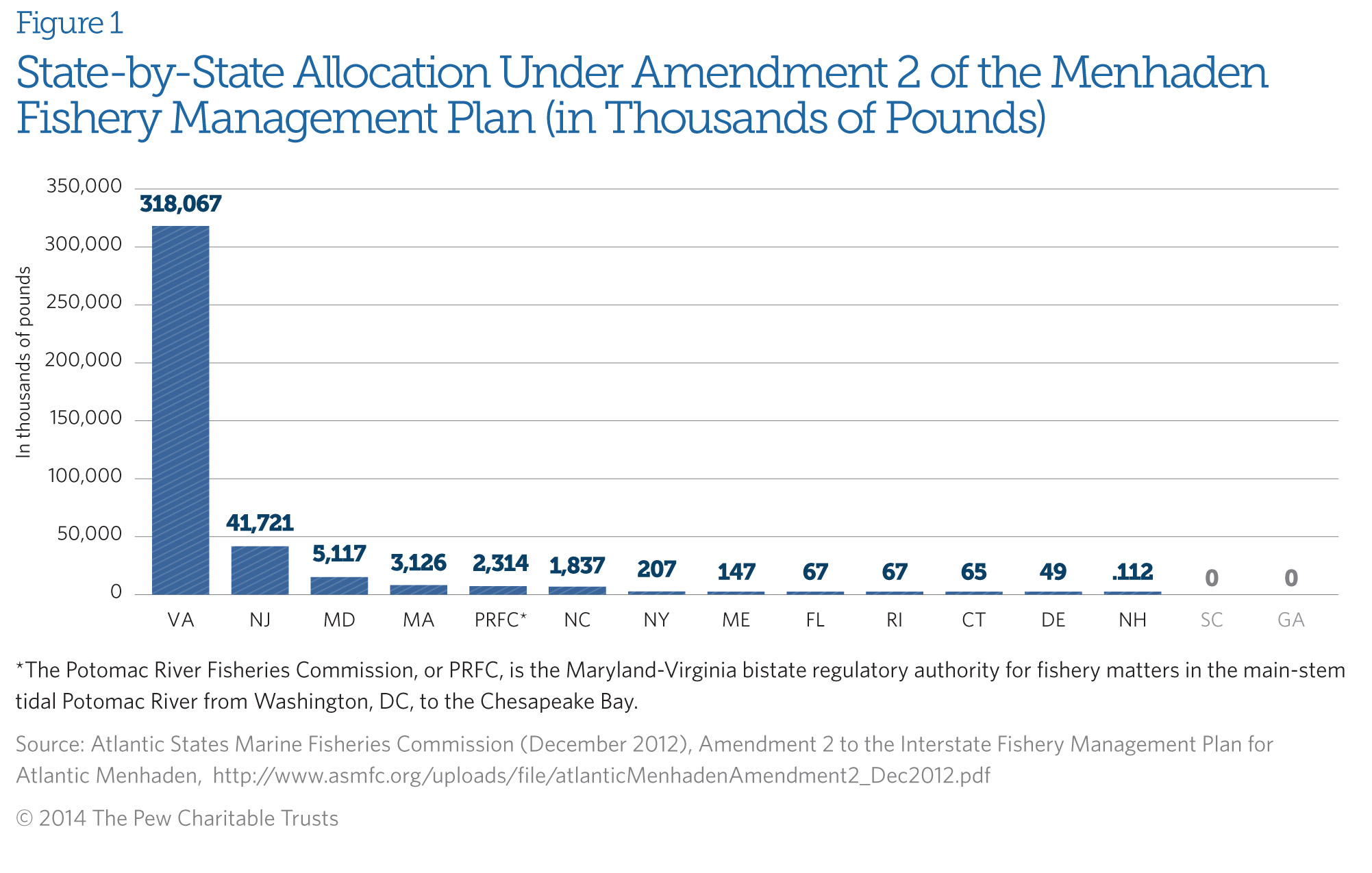Atlantic Menhaden Conservation and Management
Amendment 2: A successful first year
Atlantic menhaden play a vital role in marine ecosystems from Maine to Florida, serving as a critical food source for birds, mammals, and valuable fish species. The Atlantic States Marine Fisheries Commission, or ASMFC, manages the Atlantic menhaden fishery, which is the largest by weight on the Atlantic coast. In December 2012, the commission approved Amendment 2 to the Atlantic Menhaden Interstate Fishery Management Plan to end overfishing and reduce fishing mortality to a target level set by managers.
 © Ned Drummond
© Ned DrummondMenhaden Illustration
Goals and performance of Amendment 2
1. Coastwide quota
Goal: Amendment 2 created the first coastwide total allowable catch, or TAC, for Atlantic menhaden, establishing a maximum annual catch of 170,800 metric tons (about 377 million pounds). This represents a 25 percent reduction from the catch in 2011 and is in effect until the completion of a benchmark stock assessment in early 2015. The amendment also set a subcap on the reduction fishery harvest in the Chesapeake Bay to guard against localized depletion in this sensitive ecosystem.
Achieved: The coastwide menhaden catch did not exceed the target level in 2013. Because of Amendment 2, approximately 300 million more menhaden* were left in the Atlantic Ocean to fulfill their ecological role.
2. Allocation and reporting
Goal: In addition to the coastwide total allowable catch, Amendment 2 established a state-by-state allocation system based on the average reported landings from 2009 to 2011. States that reach their quota are required to close their menhaden fishery until the next year. Amendment 2 provides flexibility through a method by which states can transfer quota to other states, roll over their unused quota to the next year, and pay back a quota overage the next year. To facilitate management, the amendment requires timely reporting and improved sampling among the various state fisheries.
Achieved: The new management structure, including enforceable limits and reporting, is now in place in all 15 ASMFC states. The coastwide target TAC was not exceeded, and only Florida, New York, and Rhode Island exceeded their allocations. The amendment's flexibility was demonstrated when North Carolina and Massachusetts transferred uncaught quota to allow states that had gone over their limit to comply with the regulations. (See Figure 1.)
3. Biological reference points
Goal: Amendment 2 adopted new biological reference points that managers use to determine the health of the menhaden population. Managers monitor both the fishery-induced mortality rate and spawning stock biomass of menhaden; they also track the availability of the species as a forage fish because of its critical importance in supporting the ocean ecosystem.
 Challenges
ChallengesNext steps
The 2014 benchmark stock assessment for Atlantic menhaden is underway and will evaluate the health of the stock and inform future management. A special stock assessment committee has already begun to evaluate commercial landings and discards data, catch per unit effort, biological samples, and the life history information of the species. The fisheries commission will use the results of this stock assessment to update the 2015 coastwide catch limit established by Amendment 2.At the same time, commission staff and scientists are developing ecosystem reference points. Though not a part of Amendment 2, this approach would expand on the multispecies model of major predators, including striped bass, weakfish, and bluefish, to account for the broader importance of menhaden to the entire ecosystem. A special work group is collecting new data to achieve this goal.
*Pew estimate derived by subtracting total menhaden landings for 2011 from 2013, based upon total abundance and weight-at-age calculations from the 2010 ASMFC stock assessment.






